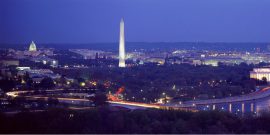Our addiction to utopian thinking suggests Fukuyama should have turned to hubris rather than thymos as the danger to watch.
Why Democratic Justices are More United than Republicans
It has been reported that this term is shaping up to be one of the most liberal at the Supreme Court since 1969. Another report by Eric Posner shows that the justices appointed by Republican Presidents are agreeing less among themselves, while the justices appointed by Democratic Presidents remain a united bloc.
We should be cautious about reading this information as a trend. The case mix changes from year to year and thus there can be expected to be overall ideological variation from year to year depending on that mix and the justices’ idiosyncratic views. But there is no doubt that the country is moving left at least on social issues and the oldest adage about the Court’s decision-making is that it follows the election returns. Certainly, the expected creation of a right to same-sex marriage would be unimaginable without the rapid and dramatic shift in public opinion on the issue.
The more interesting question is why Republican justices tend to fracture while the Democrats stay united. The first reason is that Supreme Court opinions implicate not only ideology, but jurisprudential methodology and Republicans are more divided on jurisprudence. To provide a very rough description: Justices Scalia and Thomas are both originalists, although even they differ on the weight to assign to precedent. Chief Justice Roberts and Justice Alito are more Burkean as to methodology. History and precedent for them provide a legal pattern that should be followed. Insofar as he has a methodology at all, Justice Kennedy may be a Dworkinian, although unlike Ronald Dworkin he gives more weight to a political morality of liberty as way of creating the right fit for law. In short, for Republican justices, decision making must be mapped on two dimensions with a methodological as well as an ideological axis.
In contrast, the Democratic appointees have a less distinct methodology. To be sure Ginsburg is more formalist at least in statutory cases and Breyer is a legal pragmatist for whom legal text and precedent has the least force, but these are not significant enough to prevent them from agreeing on results in most important cases, particularly constitutional ones. Another way of saying this is that ideology is far more important than methodology to the Democratic justices. The relative slighting of methodological limitations is not surprising: the Democratic party is more comfortable with the imposition of elite values judgments and social engineering. Jurisprudential constraint would just get in the way.
But even at the level of ideology, it is not surprising that Republican justices are less united, because the Republican party is an uneasy fusion at an intellectual level of libertarian and conservative thought. Scalia and Alito are conservatives, while Kennedy and Thomas tend more to the libertarian. In contrast, at the elite level the Democratic party is progressive– combining enthusiasm for government regulation of economics and distrust of regulation of morals and civil liberties. (One exception may be crime, where third way Democrats argued with more leftist Democrats about how to handle it, and we see sometimes discord on criminal procedure among the Democratic justices).
To be sure, the Democratic party at popular level must maintain a coalition of its own that has its fragilities. For instance, if Hillary Clinton moves too far to left on economics she will lose suburban moms whose allegiance to the party is mostly built on social issues. But the Court largely follows elite thinking, and here the intellectual base of the Democratic party is not riven by the kind of gulf between libertarians and conservatives that has long divided the Republican party. Thus, for both methodology and ideological reasons, we can expect that Republican appointees will be less united than Democrats for some time to come.


